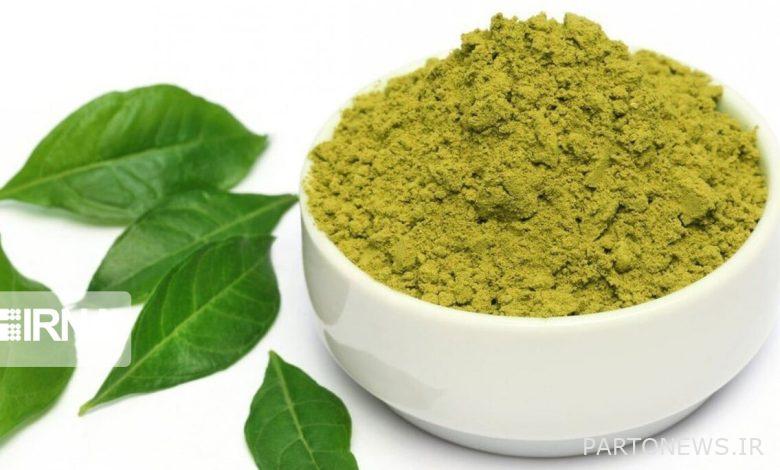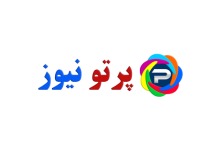Henna is an eternal relief and a unique healing for Qeshm islanders

In the belief of the people of Qeshm Island “Hannah is from Jannah” And it has a trace of heaven and a sign of happiness, love and good fortune, henna, which is called it in the local dialect. “Hanir” They say that it brings with it the coolness of the sea and is an effective treatment for all skin diseases and painful blisters, maybe it is the water that is poured on the fire.
According to Qeshmi sailors and sailors, henna has the smell of history and the taste of nature, and maybe on a far journey, the fingers of a Kathakali dancer (one of the most beautiful ritual and traditional dances that is still performed in Indian temples) in India with a captain from Qeshm, in A visit to the land of sojourn, they have joined hands and the colors and patterns on the hand have been remembered.
Perhaps, in the totality of going and coming, the symbolic language of the African people, who sometimes had no pages except their bodies and letters except patterns and images to speak, was the souvenir of their backpacks.
Painting on the body is as old as wishes, loves and cries. Black and white are mixed here and the oath of reconciliation with life and death has reached ear to ear and chest to chest.
They say that the wind takes everything with it and the sea brings everything with it, and Qeshm is the dancer among the wind that blows from the sea!
Henna is a plant from the category of “separate petals with two edges” that makes a specific genus called “henna”. This plant is a shrub that is cultivated in North and East Africa, the Arabian Peninsula, Iran and India.
Henna has been known as a type of dye since ancient times and is considered one of the oldest cosmetic compounds in the world.
Many things have been said about the first origin of the henna tree, some people consider “India” as the first origin of henna, but others consider the first origin and habitat of henna as “ancient Egypt” and believe that this plant was introduced in the 12th century AD. Egypt has been taken to India.
Archaeological research shows that in ancient Egypt, henna was used to color the fingers and toes of pharaohs before mummification. Even mummies have been found that were wrapped in cloths dyed with henna.
However, the use of henna was not exclusive to the pharaohs, and other peoples also used henna for adorning their hands and feet and medicinal-medical issues.
In India, brides’ nails and fingers were painted with henna. In the Middle Ages, Arab doctors mentioned henna as an effective medicine.
Henna has been used for burns, mouth sores and abscesses. In the past, it was common to believe that there is a power hidden in red materials such as “ochra flower”, “blood” and “henna” that increases human awareness of extraterrestrial forces. Therefore, they used this plant to maintain such “spirituality” and “power”.
Apart from many regions in the Middle East and Africa, henna was also used in South China in various ceremonies and rituals, and Buddhist monks still use fragrant henna flowers in their religious ceremonies.
It is clear that the cultivation and use of henna in Iran goes back to the very distant past and this plant has been one of the important agricultural products that have been used both inside Iran and a large part of it has been exported abroad. The main center of henna cultivation in Iran is Kerman, especially Bam and Bahram Abad, and some southern regions, especially Hormozgan.
In general, there are three types of henna, which are divided according to color: red, black and pale. The most popular type is red henna followed by black henna. Pale henna is mostly used to cool and repair the skin.
To cool the body, pale henna is mixed with some water and the person sleeps in the mixture of water and henna so that the skin of the body cools without the skin taking on a special color.
According to the sages of traditional Iranian medicine, henna is a cold and dry plant as well as a hot and dry one. This plant is useful for head, eye and mouth diseases. Its leaf poultice with walnut leaves is recommended for headache.
From the distant past until today, henna has been one of the most important and remarkable ornamental and medicinal plants for us Iranians. This plant even has a special place in our customs. Medicinal use and its use in rituals and ceremonies have been one of the main uses of henna in the past.
Also, they have taken advantage of its disinfection and removal properties for the cleanliness and coolness of the skin and hair. Many Africans and Asians used this cheap and readily available substance to cool and clean their hair in the hot months, and henna has been used in various rituals, including weddings, circumcisions, funerals, and other ceremonies.
The most beautiful appearance of henna in the marriage ceremony of a man and a woman is a birthday and another mission. To wish for the bride’s green luck, holy henna is engraved on her hands and feet, while the bride is decorated with green clothes and cloths, for her. They sing “Sabez Sabz” and four women sing, 2 by 2, with a female dialogue, cheering, women’s buttocks (a song similar to the dialogue that is performed by women at weddings and Hanabandan ceremonies).
Creating pictures on hands and feet, especially the hands and feet of brides, is not only an important part of Qeshm’s traditional wedding celebration, but also among the premium arts that the women and girls of the island are interested in.
In addition to weddings, henna is also used in other celebrations, such as Eid al-Fitr and Qurban, which are the most important holidays in Qeshm Island.
Hanabandan is the most famous ritual in which henna plays a key role. The wedding ritual in Qeshm begins with henna bands, and according to the common belief, tying the bride’s henna is one of the obligatory things, and tying it to the hands and feet of the bride and groom is a necessary and inseparable part of the wedding celebration.
In the past, in the Qeshm island, during the wedding celebration, three nights were dedicated to Hanabandan and all the hands and feet of the bride were covered with these pictures, and they believed that this would bring good luck to the bride.
the first day “Hanir Dezi” they say. On the night of this day, only the bride’s close relatives are invited, and the henna of the bride or the groom is not given to anyone, and it is used only in rituals.
the second night “Hanir Rasti” They say, as usual, relatives and acquaintances are often invited to the party on this night.
The third night of HanabandanHanir Awaza” It is called On this night, a part of the bride and groom’s henna is “exchanged” together. It is the women’s responsibility to tie the henna of the bride and the groom, and this work is also done by a group of familiar and close women.
During the ceremony of Hanabandan, women stand around the bride and groom and sing poems in praise of the Prophet (PBUH) and imams (PBUH), which is known as Basnak, as well as other rhythmic poems, and shake the pieces of cloth in their hands. they read
Of course, old women also use henna, but they simply cover their hands and feet. Used henna used to be obtained from India and mixed with Omani lemon, tea and sugar to make the henna more colorful. Currently, henna is imported from Dubai to Qeshm.
The motifs used in henna designs are different and unconventional twists of flowers and leaves that are also used in needlework.
In the past, very simple lines were used to draw henna motifs. Motifs such as the sun and palm tree and tiny dots have been the most common forms used. These motifs were drawn mentally and did not have any kind of plan or ready plan. Over time, their variety and extent has been added.
In the motifs used in other handicrafts of the island, such as Glabton embroidery, the idea has been taken. The girls and women of the island are very fond of these designs and drawing them with henna and cover the entire surface of their hands and fingers with them.
These pictures are the creative minds of women both in Gulabton Doozi and Henna Travideh. In the past, henna flowers and designs were applied to the hands and feet with a needle or a needle, but today, special funnels are used to apply the henna paste on the hands and feet and make the designs last.
The motifs of these decorations are mostly vegetable, and currently, most of the henna motifs are of non-Iranian origin and are taken from Arabic catalogs, and they also use ready-made imported stencils to make patterns on the hands and feet.
With the use of the art of the women of Qeshm Island, the land of water and sunshine, these flower motifs of henna bushes come to life on the hands and feet as if they had never had a land as smooth as a hand or a foot before.
With henna drawings, they put a pattern on their hand and a hand on a pattern, and hope and life are planted in their hands, and new buds grow from under their nails and bracelets, and perhaps they remember their longing for greenery and flowers. and unless it is the compensation of all the sows in which no seed grows.
The Persian Gulf, with an area of nearly 237,473 square kilometers, is located between 24 and 30 degrees and 30 minutes north latitude and 48 and 56 degrees and 25 minutes east longitude from the Greenwich Meridian, and the beautiful island of Qeshm is like a gem on the expanse of blue waters. It shines.

